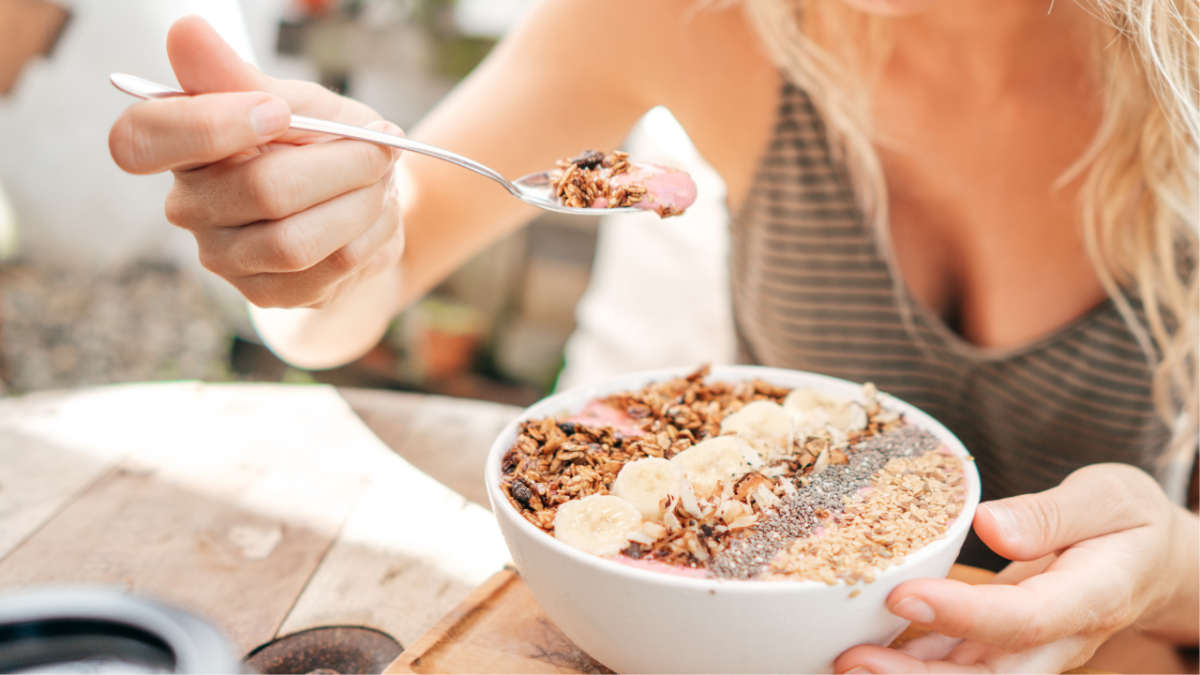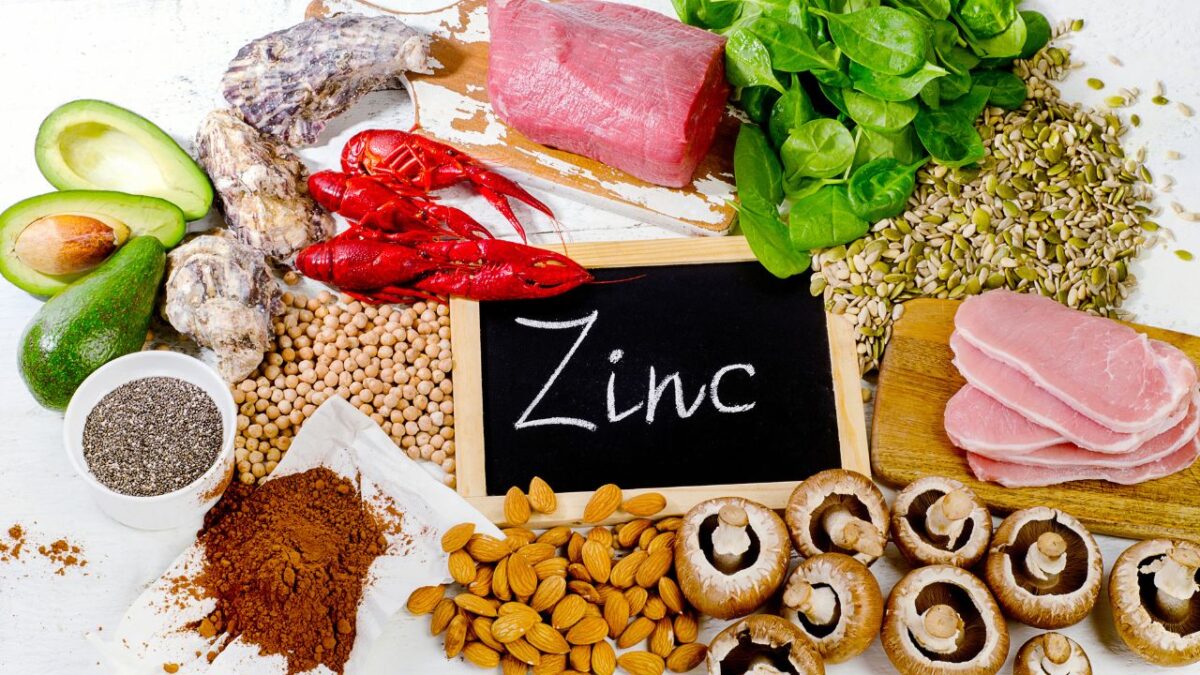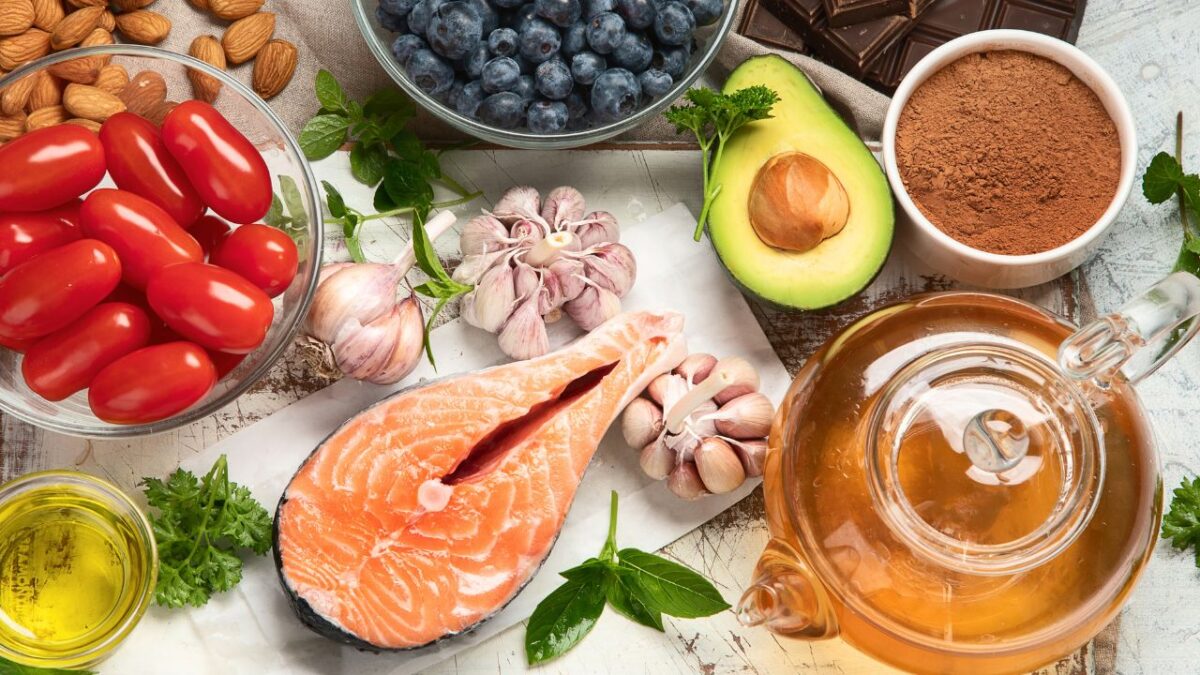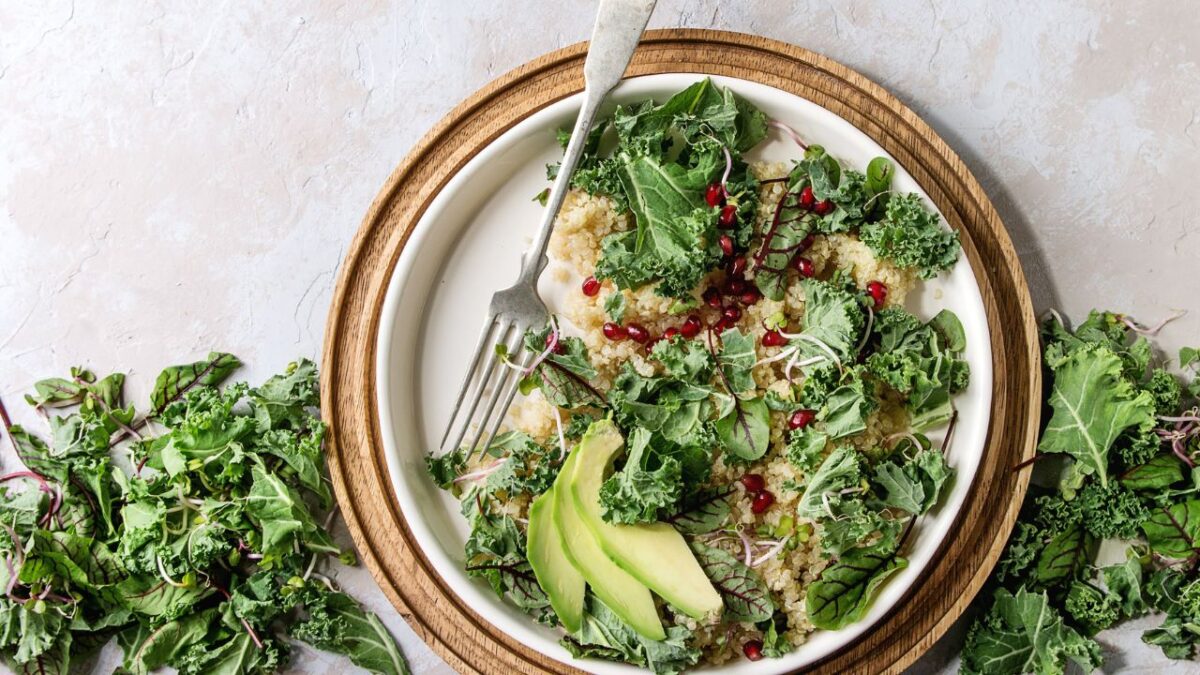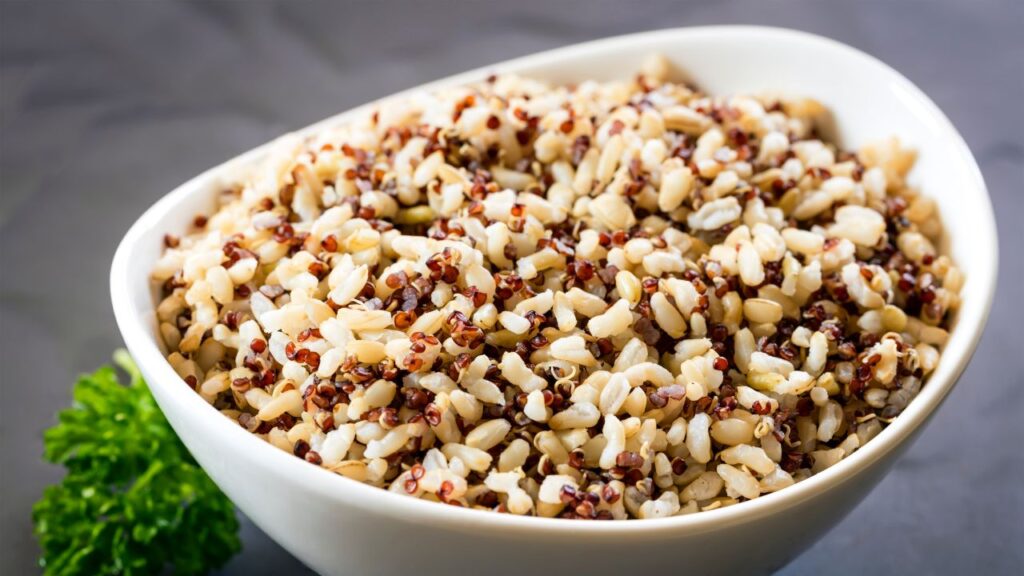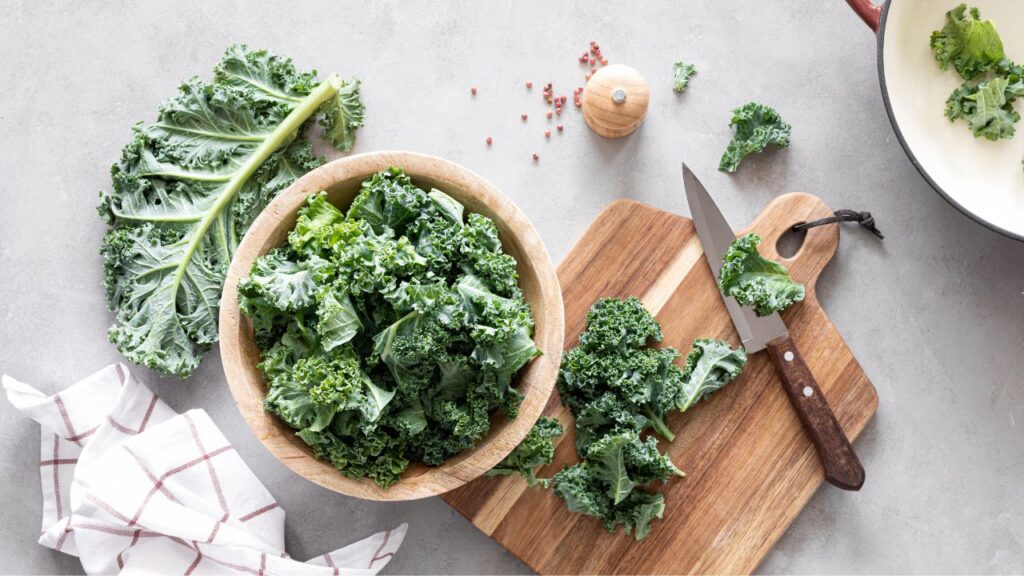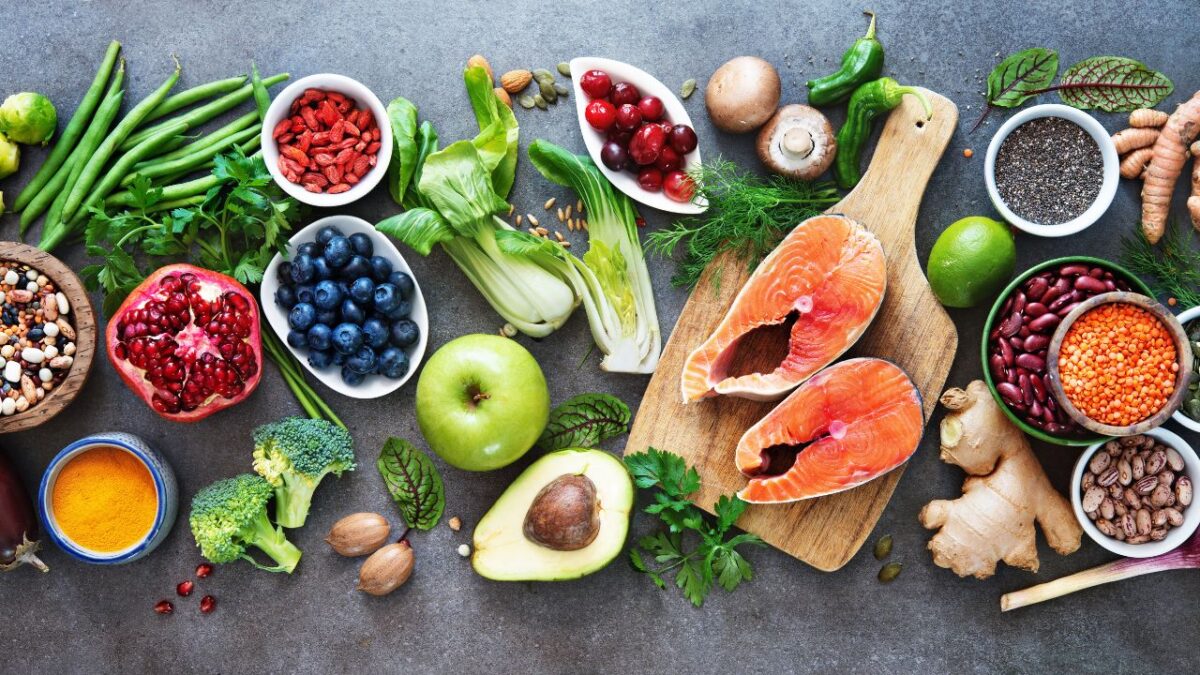5 Easy & Delicious Breakfast Recipes for Women Going Through Menopause
Going through menopause comes with a lot of changes, and let’s be real, it’s not always a smooth ride. Dealing with a lot of symptoms such as hot flashes, mood swings, and low energy can feel overwhelming. But here’s some good news: what you eat in the morning can make a big difference in how you feel throughout the day.
Breakfast is your chance to set the tone, and when you pack it with the right nutrients, it can help ease some of those common menopause symptoms. Think of it as fueling your body with the kind of energy that won’t leave you crashing later on. We’re talking about meals that balance hormones, support bone health, and boost your mood—while still tasting delicious, of course!
In this post, we’ve rounded up five easy breakfast recipes designed specifically with menopausal women in mind. These recipes are not only packed with fiber, protein, and healthy fats, but they’re also rich in key nutrients like calcium, omega-3s, and magnesium—all of which are super important during this time. Whether you’re a fan of a quick smoothie or love a hearty oatmeal bowl, there’s something here for everyone.
So, grab your fork (or spoon!), and let’s dig into some breakfasts that will have you feeling energized, balanced, and ready to take on the day—no matter what menopause throws your way!
1. Chocolate Chia Seed Pudding with Almonds and Blueberries
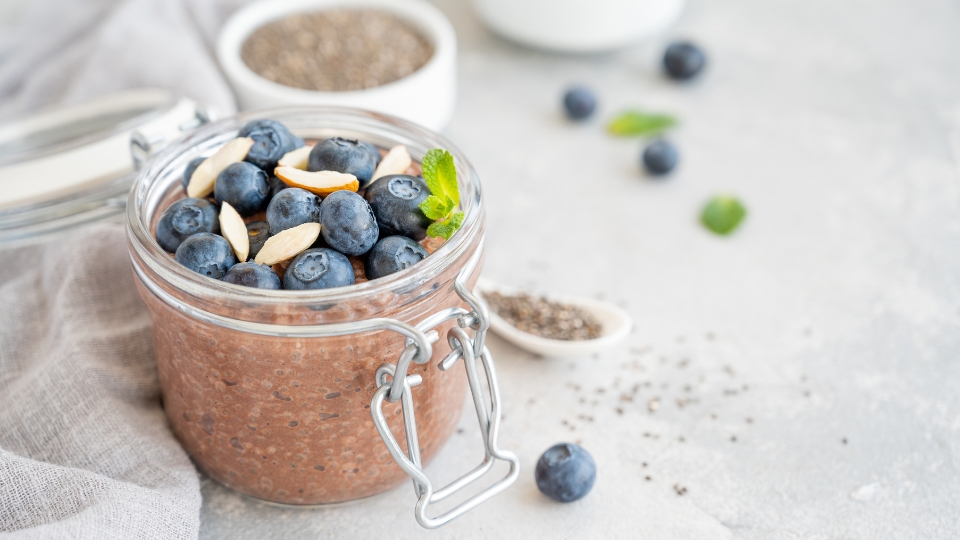
Why it’s great:
Chia seeds are rich in omega-3s, which help reduce inflammation and balance hormones, while the addition of cocoa powder gives you a boost of antioxidants. Almonds provide protein and healthy fats, and blueberries are packed with fiber and vitamins—both crucial for women going through menopause.
Recipe:
- 3 tbsp chia seeds
- 1 cup unsweetened almond milk
- 1 tbsp unsweetened cocoa powder
- 1 tsp vanilla extract
- 1 tsp honey or maple syrup (optional)
- Handful of fresh blueberries
- 1 tbsp slivered almonds
Whisk together the chia seeds, almond milk, cocoa powder, vanilla, and sweetener in a bowl. Refrigerate overnight or for at least 4 hours. In the morning, top with fresh blueberries and almonds for a breakfast that’s equal parts indulgent and nutritious!
2. Avocado & Egg Toast

Why it’s great:
Avocados are a powerhouse of healthy fats, which can help regulate hormones and support brain health during menopause. Adding an egg gives you a perfect protein boost to keep you fuller for longer and maintain steady energy levels throughout the morning. Plus, the combination is super satisfying and delicious!
Recipe:
- 1 slice whole-grain or sourdough bread
- ½ ripe avocado
- 1 boiled, poached, or fried egg
- Pinch of salt and pepper
- A drizzle of olive oil
- Optional toppings: cherry tomatoes, chili flakes, or sesame seeds
Toast the bread until it’s golden and crispy. Mash the avocado on top, and sprinkle with salt and pepper. Add your cooked egg, then drizzle with a bit of olive oil. For extra flavor and texture, throw on some tomatoes or chili flakes.
3. Greek Yogurt Bowl with Banana, Chia Seeds, and Pumpkin Seeds

Why it’s great:
Greek yogurt is a fantastic source of calcium and probiotics, which are vital for bone health and digestion—both of which become more important during menopause. Bananas provide a natural sweetness along with potassium, which can help with bloating, while chia and pumpkin seeds add fiber, healthy fats, and a bit of crunch to keep you satisfied and energized.
Recipe:
- 1 cup Greek yogurt (plain, unsweetened)
- 1 ripe banana, sliced
- 1 tbsp chia seeds
- 1 tbsp pumpkin seeds
- Drizzle of honey or maple syrup (optional)
In a bowl, layer the Greek yogurt and top it with sliced bananas. Sprinkle chia and pumpkin seeds on top for texture and a nutrient boost. Add a drizzle of honey or maple syrup for a touch of sweetness if desired. This breakfast is creamy, crunchy, and filled with all the good stuff your body craves during menopause!
4. Oatmeal Porridge Bowl with Walnuts, Apple and Cinnamon

Why it’s great:
Oats are rich in soluble fiber, which helps regulate cholesterol levels and supports heart health—a key concern during menopause. Walnuts provide a healthy dose of omega-3s, which are great for brain health and reducing inflammation. The apple adds a natural sweetness, fiber, and a dose of antioxidants, while cinnamon helps manage blood sugar levels, keeping those energy crashes at bay.
Recipe:
- ½ cup rolled oats
- 1 cup almond milk or water
- 1 small apple, diced
- 1 tbsp walnuts, chopped
- ½ tsp cinnamon
- 1 tsp honey or maple syrup (optional)
Cook the oats in almond milk or water according to package directions. Once creamy, stir in cinnamon and top with diced apple and chopped walnuts. For an extra touch of sweetness, drizzle with honey or maple syrup. This warm, comforting breakfast will keep you satisfied and feeling balanced all morning long!
5. Smoothie with Spinach, Mango and Protein Powder
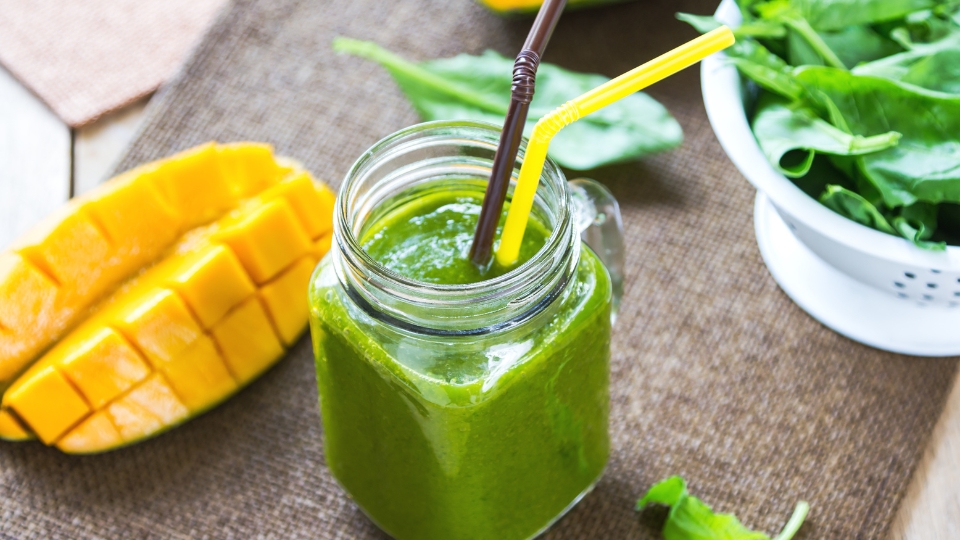
Why it’s great:
This smoothie is a refreshing way to start the day with a blast of nutrients. Spinach provides magnesium, which helps manage stress and supports muscle function, both important during menopause. Mango is rich in vitamin C and fiber, giving you a sweet, tropical twist, while protein powder ensures you stay full and energized. It’s the perfect balance of greens, fruit, and protein.
Recipe:
- 1 cup unsweetened almond milk
- 1 handful spinach
- ½ cup mango (fresh or frozen)
- 1 scoop plant-based or whey protein powder
- 1 tbsp chia seeds or flax seeds (optional)
Blend all ingredients together until smooth. This vibrant green smoothie offers the perfect mix of creamy and fruity flavors, while giving your body the nutrients it needs to feel strong and balanced through the day. Enjoy it as a quick breakfast or post-workout refresher!!
Takeaway
Menopause is a time when your body needs extra care and attention, and breakfast is a great place to start. The recipes above are designed to give you a nourishing, balanced meal that supports hormone health, boosts energy, and keeps you feeling satisfied throughout the day.
By incorporating foods rich in healthy fats, fiber, protein, and essential vitamins, you’re giving your body the nutrients it needs to tackle menopause with more ease and balance.
Here are a few tips to keep your breakfasts nourishing and menopause-friendly:
- Add Healthy Fats: Foods like avocados, walnuts, chia seeds, and almond butter are packed with healthy fats that support hormone balance and brain health. Don’t shy away from these—your body needs them!
- Focus on Fiber: Menopausal women often struggle with digestion or weight gain, and fiber is your best friend. Oats, fruits, chia seeds, and flax seeds are excellent sources to help keep you regular and support heart health.
- Prioritize Protein: Protein helps stabilize blood sugar and keeps you full longer. Adding eggs, Greek yogurt, or protein powder to your meals can prevent those mid-morning energy crashes.
- Boost Calcium and Magnesium: As estrogen levels drop, bone health can become a concern. Foods like Greek yogurt, almonds, spinach, and chia seeds are excellent sources of calcium and magnesium, which support bone density and muscle function.
- Add Antioxidants: Menopause can increase oxidative stress, so include plenty of antioxidant-rich foods like berries, spinach, and cocoa. These help combat inflammation and support overall well-being.
Quick Tip: Prep ingredients ahead of time! Make overnight chia pudding or pre-chop fruits and veggies for smoothies. This makes it easier to whip up a nutritious breakfast on busy mornings.
By focusing on whole, nutrient-dense foods, you can feel more energized, improve mood stability, and support your overall health through menopause.
Join the Conversation!
We’d love to hear from you!
Whether you’re navigating perimenopause, menopause, or just curious about healthy living, feel free to share your experiences, tips, and favorite recipes.
Have questions? Ask away!
Let’s support each other on this journey—leave a comment below or connect with me on social media.

